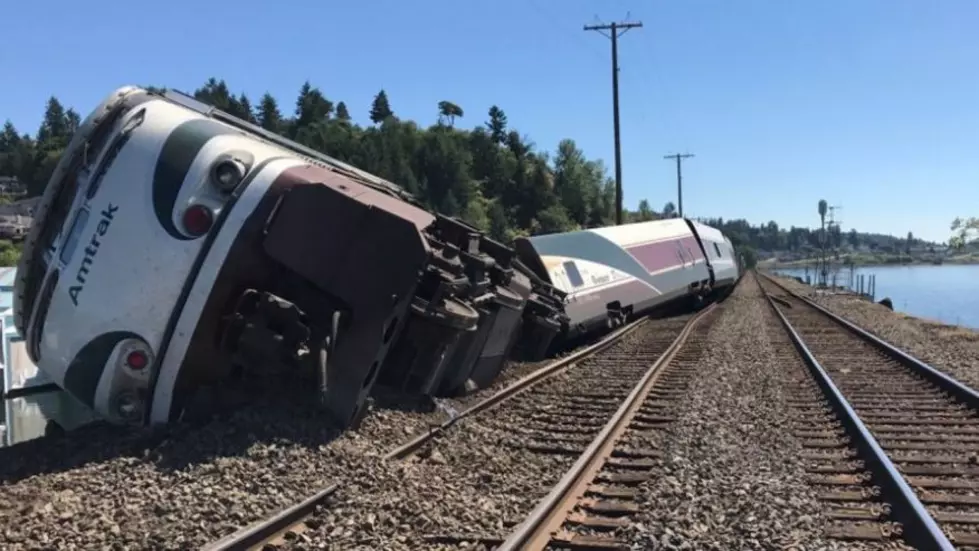
How Do They ‘Re-Rail’ a Derailed Train? This Video Explains It
With the announcement of a mock train derailment drill happening, my brain got to wondering how a derailed train gets "re-railed", so to speak.
Statistically speaking, the majority of train derailments occur because of an issue with the tracks. According to the law offices of Larry H. Parker, "track-related issues are the top cause of trains derailing." Whether it be a broken weld or a broken rail, a buckled track, a joint bar defect, or just wide gauges, the tracks are usually the culprit when it comes to having a train derail.
Other issues that could cause a derailment, according to the Parker website, include issues with the train cars themselves, including wheel or brake issues or other equipment failures. Human error ranks 3rd as the most common reason trains derail, from engineer misjudgment or poor operation to incidents of vandalism.
(The aforementioned category of reasons trains derail include people like you and me who sometimes fail to look both ways when approaching a level crossing. Trains engineers can't stop to look and listen; drivers of cars and trucks can.)
And, finally, environmental conditions have created situations in which trains have derailed, from snowstorms to floods to tornados to earthquakes, Mother Nature can (and usually does) win.
So how do train people get train cars back onto the train tracks after a train derailment? Well, it takes lots of training. (So sorry for the puns.)
If it is a "major" derailment, the job may require specialty cranes to lift the derailed cars back onto the tracks, as seen in the photo below:
Well, if it is a "simple" derailment (meaning that there was little to no damage to the tracks or to the train cars themselves and the cars are still upright), the process is easier than I had imagined.
A metal device is attached to the track that is to designed to guide the wheel off of the crossties and back onto the rail.
The train car is then pulled toward the "good" track and, if all goes well, with a big 'ol "CLANK", the car will be back on track!
It looks pretty easy, but after reading up on the process, it is still hit-and-miss and doesn't work every time.
Remember, I am not at all an expert when it comes to trains. I would imagine that the process becomes a bit more persnickety when the derailed car has a full load, and persnickety turns to dangerous when that load could cause health concerns for employees or residents in the area.
Here's a video of a train derailment that took place in Jim Thorpe, Pennsylvania. A man just happened to be taking video of a train at a level crossing - little did he know that he was going to be witnessing such excitement!
Due to the damage caused when this trained derailed, it took heavy equipment to place it back on the tracks.
So, now you know how trains are "re-railed"!
7 Interesting Facts About The Atchafalaya Basin Bridge
10 of Louisiana's Weirdest Laws
Ten Iconic Characters From The 80s
More From Hot 107.9







![Trains In Distress Is A Huge Distraction For Me Today [VIDEO]](http://townsquare.media/site/34/files/2016/03/Screen-Shot-2016-03-01-at-6.56.52-AM.png?w=980&q=75)
![Crazy Man Yells At Trucks, Trains, And Automobiles [VIDEO]](http://townsquare.media/site/34/files/2011/11/Screen-shot-2011-11-14-at-6.03.26-PM.png?w=980&q=75)
